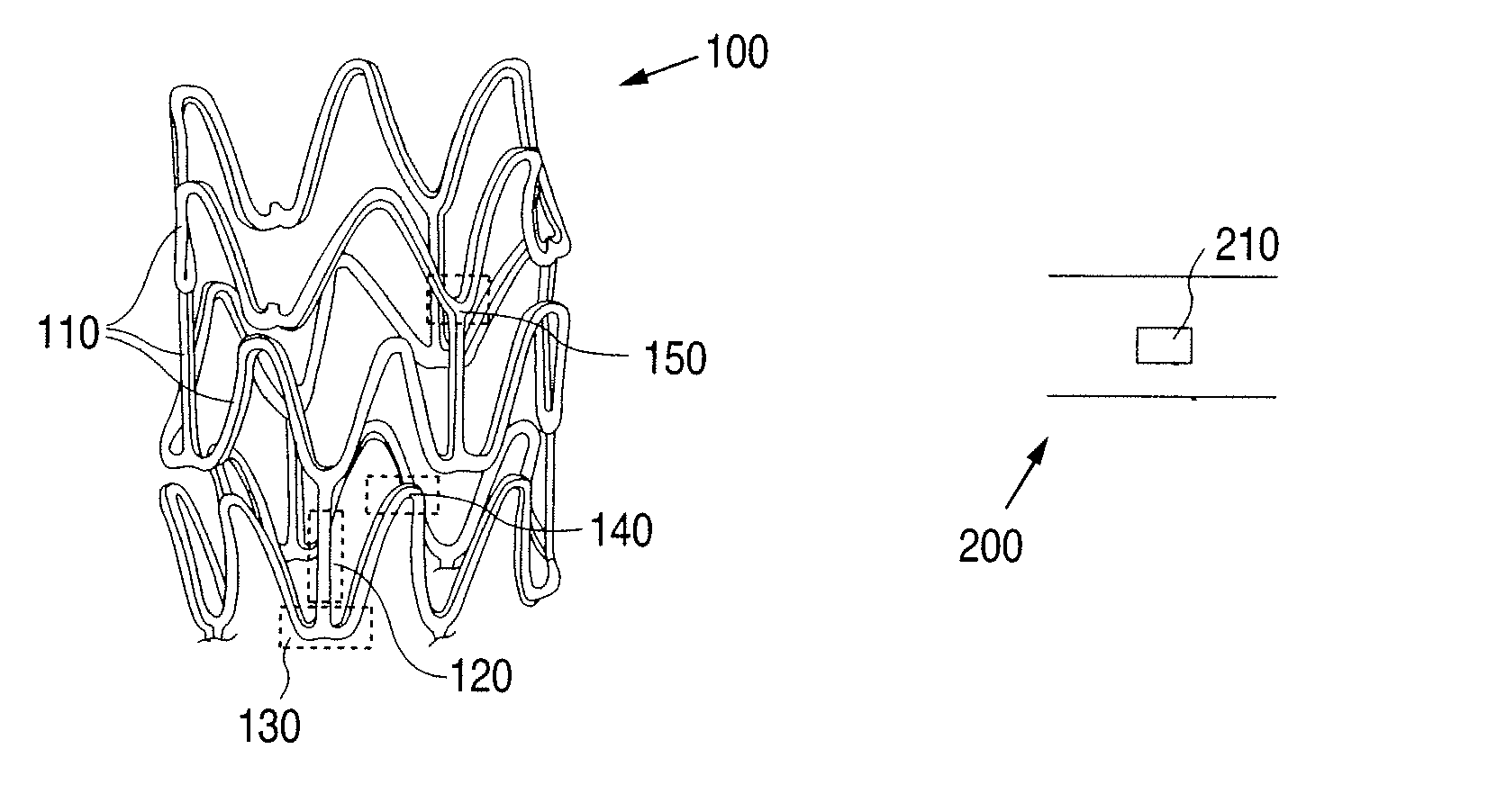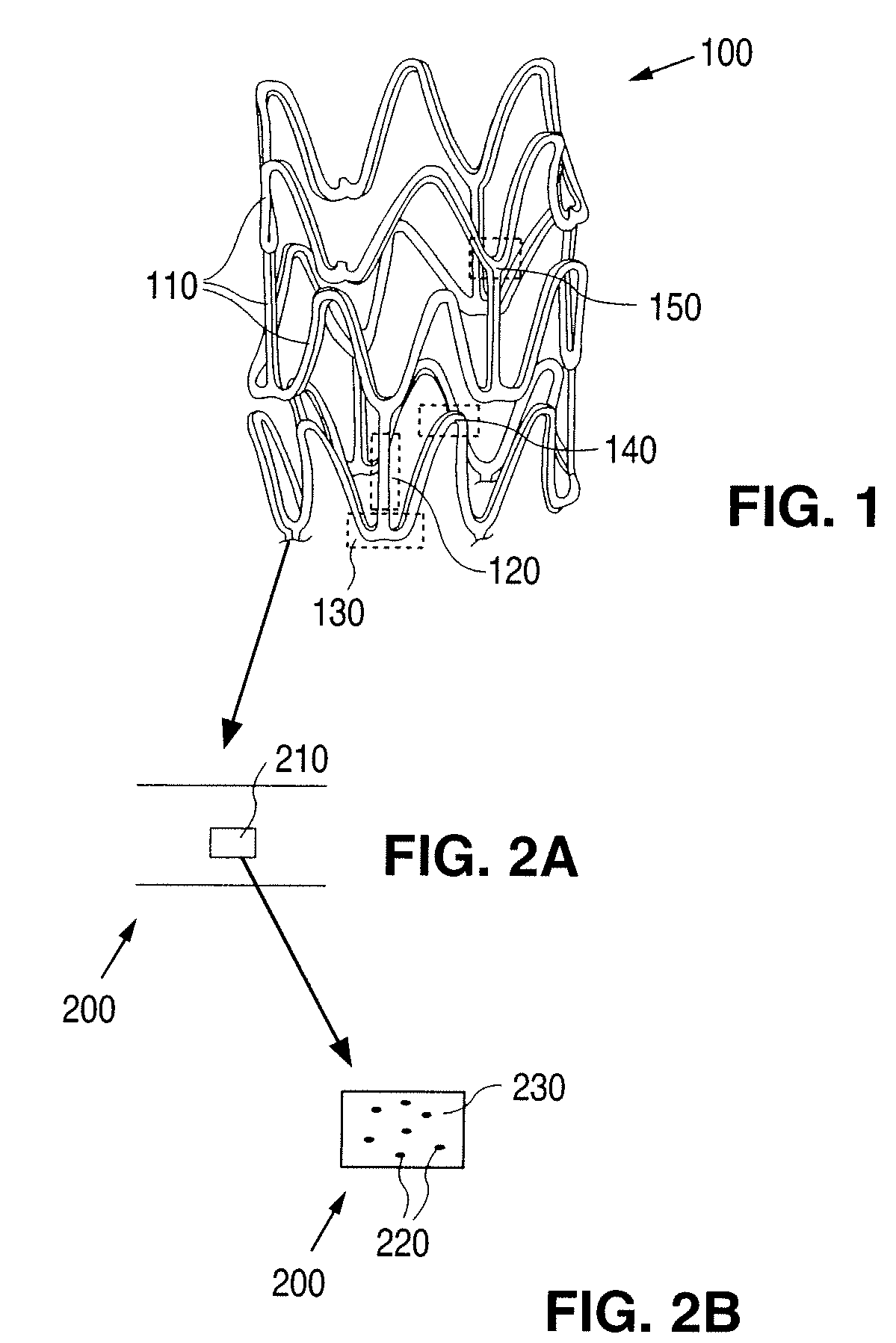Stent formed from bioerodible metal-bioceramic composite
a bioceramic composite and metal-based technology, applied in the field of implantable medical devices, can solve the problems that the interaction between the stent and surrounding tissue can pose a risk of endothelial dysfunction and late thrombosis, and achieve the effects of reducing the erosion rate and enhancing the mechanical properties of the stent body
- Summary
- Abstract
- Description
- Claims
- Application Information
AI Technical Summary
Benefits of technology
Problems solved by technology
Method used
Image
Examples
example
[0098]The example set forth below is for illustrative purposes only and are in no way meant to limit the invention. The following example is given to aid in understanding the invention, but it is to be understood that the invention is not limited to the particular materials or procedures of examples.
[0099]Magnesium Alloy / Nano Hydroxyapatite (HAP) Composite Stent Preparation
[0100]Step 1 Composite preparation: 1 kg of magnesium alloy is mixed with 100 g nano HAP at room temperature in a mechanical blender. The mixture is extruded through a signal or twin screw extruder with a puller at 400° C. The extruded tubing has an inside diameter 0.128 in and outside diameter=0.136 in.
[0101]Step 2 Stent preparation: The tubing is cut into a stent by a laser, and crimped to smaller diameter (0.05 in).
PUM
 Login to View More
Login to View More Abstract
Description
Claims
Application Information
 Login to View More
Login to View More - R&D
- Intellectual Property
- Life Sciences
- Materials
- Tech Scout
- Unparalleled Data Quality
- Higher Quality Content
- 60% Fewer Hallucinations
Browse by: Latest US Patents, China's latest patents, Technical Efficacy Thesaurus, Application Domain, Technology Topic, Popular Technical Reports.
© 2025 PatSnap. All rights reserved.Legal|Privacy policy|Modern Slavery Act Transparency Statement|Sitemap|About US| Contact US: help@patsnap.com


